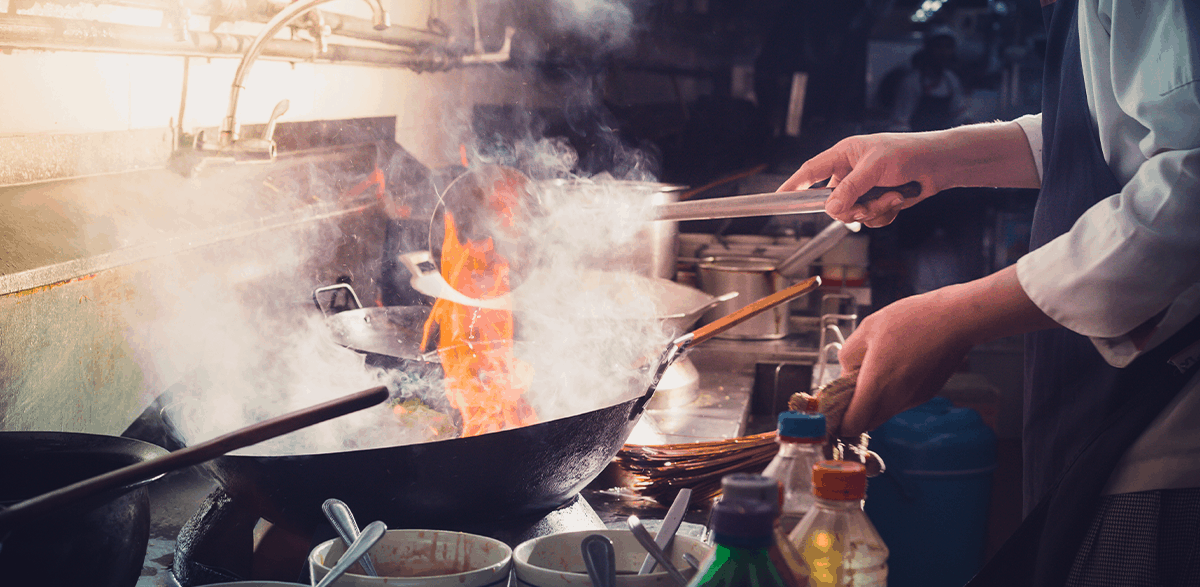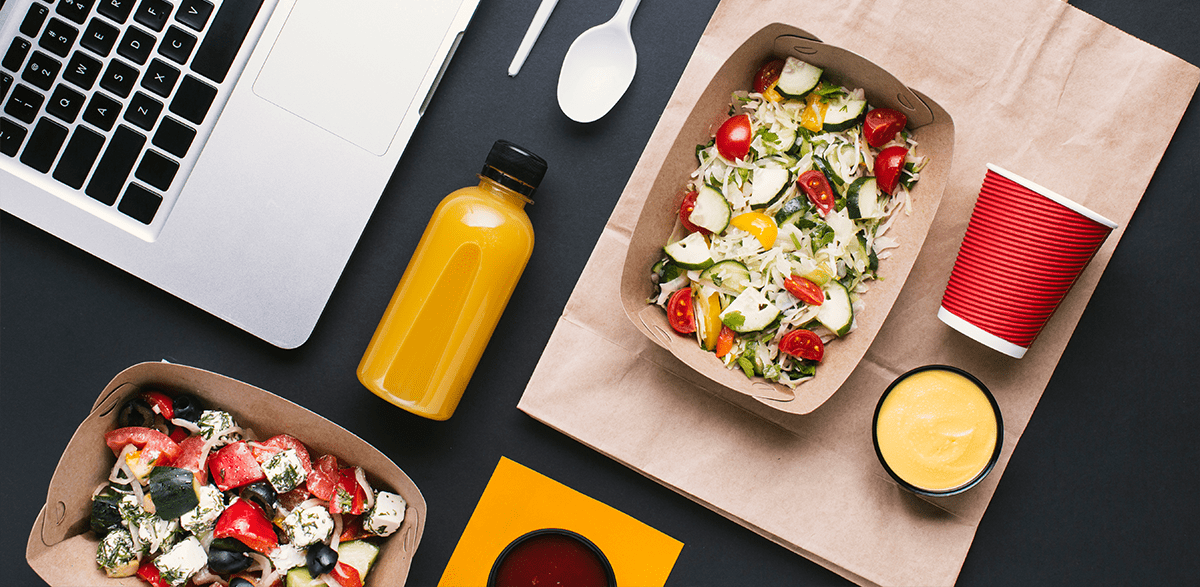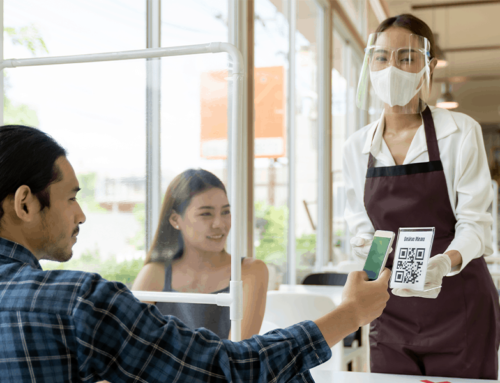Understanding Ghost Kitchens
- How is a ghost kitchen different from a traditional restaurant?
- What types of ghost kitchens are out there?
- Why launch a ghost kitchen?
- What are the challenges of launching a ghost kitchen?
- Who launches a ghost kitchen?
- Who are some of the ghost kitchen disruptors?
- Is it time to consider a ghost kitchen concept?
Ghost kitchens are a simple reinvention of the traditional restaurant. They are a restaurant run inside another restaurant’s kitchen that only provides food for delivery services.
Even before the pandemic when demand for food delivery exploded, third-party delivery companies helped drive restaurant take-out up 52% annually over the past few years.
Now, with delivery an accepted habit Americans will be hard-pressed to give up, ghost kitchens are predicted to become a trillion-dollar market by 2030.

How is a Ghost Kitchen Different from a Traditional Restaurant?
Unlike the traditional dine-in restaurant, ghost kitchens lack a dining room and are a delivery-only model. Ghost kitchens — often called virtual, dark, or cloud kitchens — skip the in-dining experience, instead focusing on high-quality hot meals delivered to wherever their customers are. These delivery-only restaurants take online or phone orders in one location. A delivery driver or third-party services like DoorDash, Grubhub, or Uber Eats picks it up and then delivers the mean to the customer.
What Types of Ghost Kitchens Are Out There?
Since the ghost kitchen is a kind of restaurant disruptor, you should expect new models to continue to emerge. However, for now, there are three primary types of ghost kitchens.
The first is the commissary ghost kitchen, which is a rented space, often shared with other types of delivery-only restaurants. Then there’s the existing traditional restaurant that runs a back-of-house parallel ghost kitchen delivery service in addition to the front-of-house in-room dining experience. Finally, there are food truck rental services that allow you to launch from what is basically a mobile vending unit.
Why are existing restaurateurs considering this new type of foodservice venture?

Why Launch a Ghost Kitchen?
Many entrepreneurs launch a ghost kitchen to capitalize on all of the pandemic social distancing we’ve been doing. As we shelter in place, most people have looked to delivery service for a little change in their routine of staying at home to work, staying home with the kids, and staying home instead of going out on the weekend.
Even if we get back to some semblance of normal (whatever that looks like), the convenience of meal delivery is something that many of us simply appreciate. Also, remote workers are anticipated to stick around; by 2025, 70% of the workforce will be working-from-home at least five days a month. U.S. food delivery raked in nearly $20 million by 2019, and that was before COVID kept us all at home.
All of these trends spell out a compelling argument for capitalizing on a ghost kitchen today. Some of the benefits of eschewing a traditional brick and mortar kitchen for a deliver-only model include:
- Reduced rent; you don’t have to set up a pricey storefront rental in a trendy neighborhood anymore
- Lower overhead; you can skip the decorations, furnishings, and upgrades necessary to create an on-site dining experience
- A flexible model: that can shift menus and marketing strategies quickly
- Improved workflows; there are no worries about the logistics of tableside service, seating, or ambiance.
- Data-driven insights; in other restaurant models, it’s harder to capture customer information, but online ordering allows you to capture order data and then follow-up with email marketing, coupons, and more to build your brand.
- Faster launch time: with less cost; a traditional restaurant costs an average of $275,000 but a ghost kitchen costs about $20,000
These are all compelling reasons to get into the concept of the virtual ghost kitchen. But who should take on this new business model to ensure that it’s successful?
What are the Challenges of Launching a Ghost Kitchen?
While we’re exuberant about the concept and possibilities inherent in a ghost kitchen, any business model has challenges associated with it. For a ghost kitchen, the challenges are related to the logistics of the delivery process. The food must be packaged in a way that it doesn’t get soggy or dry out. The containers and delivery carrying bags must be designed properly so the customer’s food doesn’t suffer or your business will be short-lived.
Also, your marketing of this service will be strictly online. If you’re not savvy in social media, email marketing, or SEO, seek the help of a professional or you’ll lose.
Finally, give some thought to your third-party vendor relationships. Will you use an app for ordering? What about a third-party delivery service? Should you use a marketing team to get the word out and keep customers coming in?

Who Launches a Ghost Kitchen?
There are all kinds of new ghost kitchens cropping up. Some of the types of people taking on these new food concept companies include:
- Entrepreneurs or new chefs looking to make their mark on the communities they serve
- Small existing restaurants interested in expansion can add a second or third location without the big investment
- Established chain stores can take on a delivery model to stay on top of changing consumer demands
- Food truck owners can expand to a ghost kitchen and run it in parallel with their traveling unit
- Grocery stores can deliver their prepared foods to step up their game
- Campus-dining centers or corporate caterers could add a ghost kitchen delivery option to capitalize on the revenue generated by students hungry for convenience
Who are Some of the Ghost Kitchen Disruptors?
You might be shocked to know that Burger King has a ghost kitchen. On the opposite end of the spectrum, CloudKitchens, founded by Uber creator Travis Kalanick, raised $400 million in investor funding to grow the new business. The Virtual Kitchen Co. picked up $15 million in series A financing in 2019. Not to be outdone, DoorDash, the food delivery company, opened their own ghost kitchen. Other food delivery companies are following suit. Then there are some smaller, elite brands opening their own ghost kitchens, such as FAT Brands Inc. in Beverly Hills and Wingstop Inc., based in Dallas.
Is it Time to Consider a Ghost Kitchen Concept?
The Washington Post recently published an article on ghost kitchens and some of the profits we’re seeing nationwide. Adding a ghost kitchen to an existing restaurant service line can bring in $6,000 to double that in additional sales each week, according to one entrepreneur. Not only that, but the profit on a typical sit-down restaurant meal is about $1.50. According to the article, if the customer spends $10 for a ghost kitchen delivery the profit is $3 to $4 per meal.
Insight Hospital Group can help you launch a successful ghost kitchen venture. We offer our foodservice clients the most cutting-edge techniques to market to potential customers and keep them coming back for more. Find out how we can ensure the success of your hospitality venture. Call on us.


